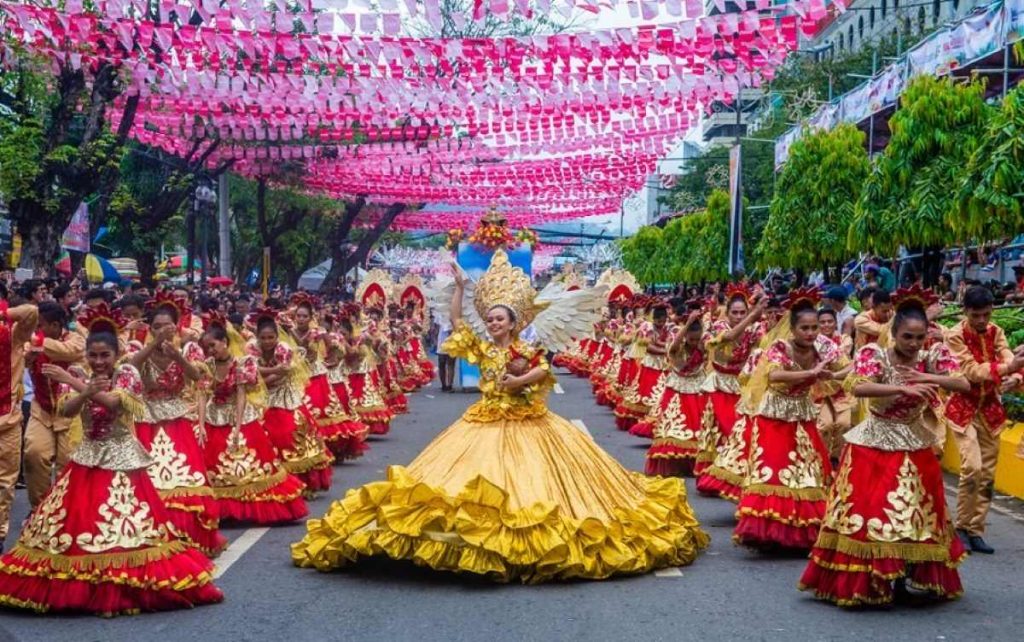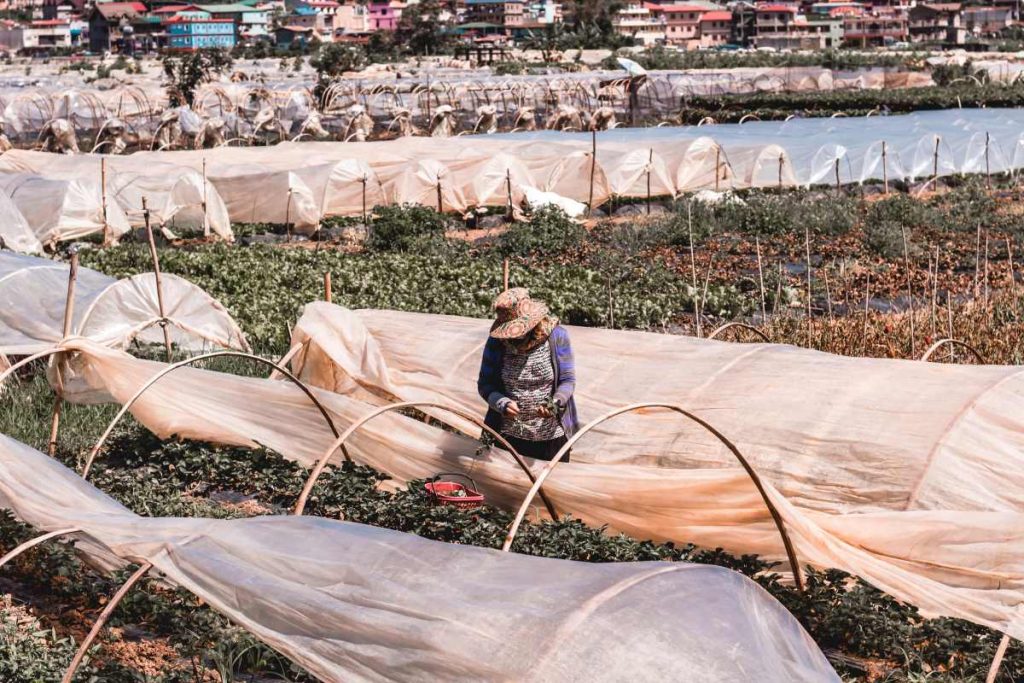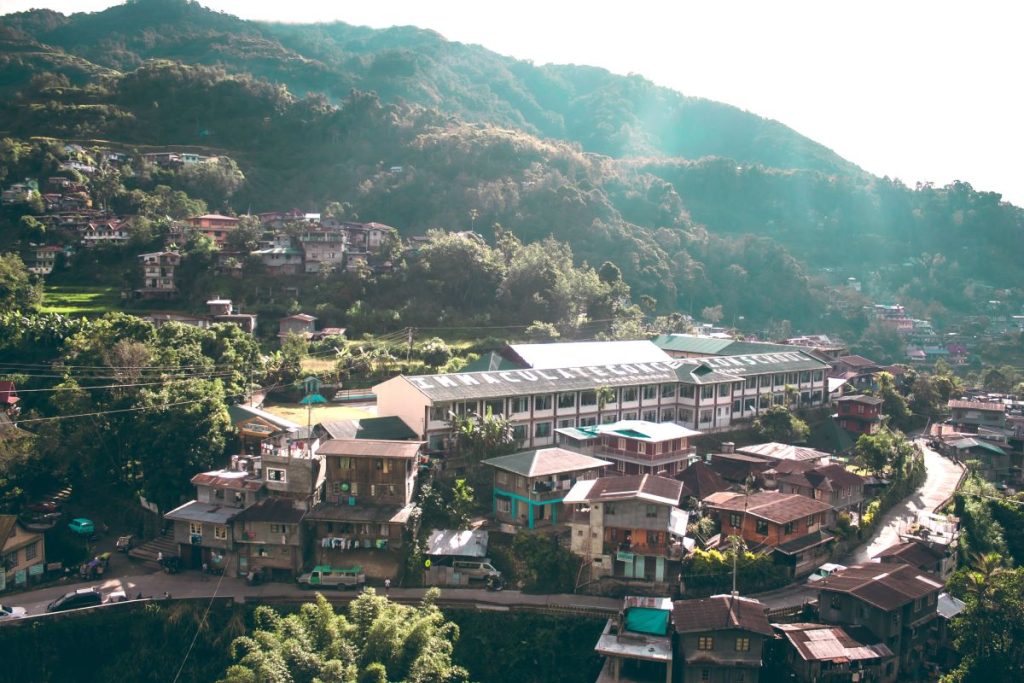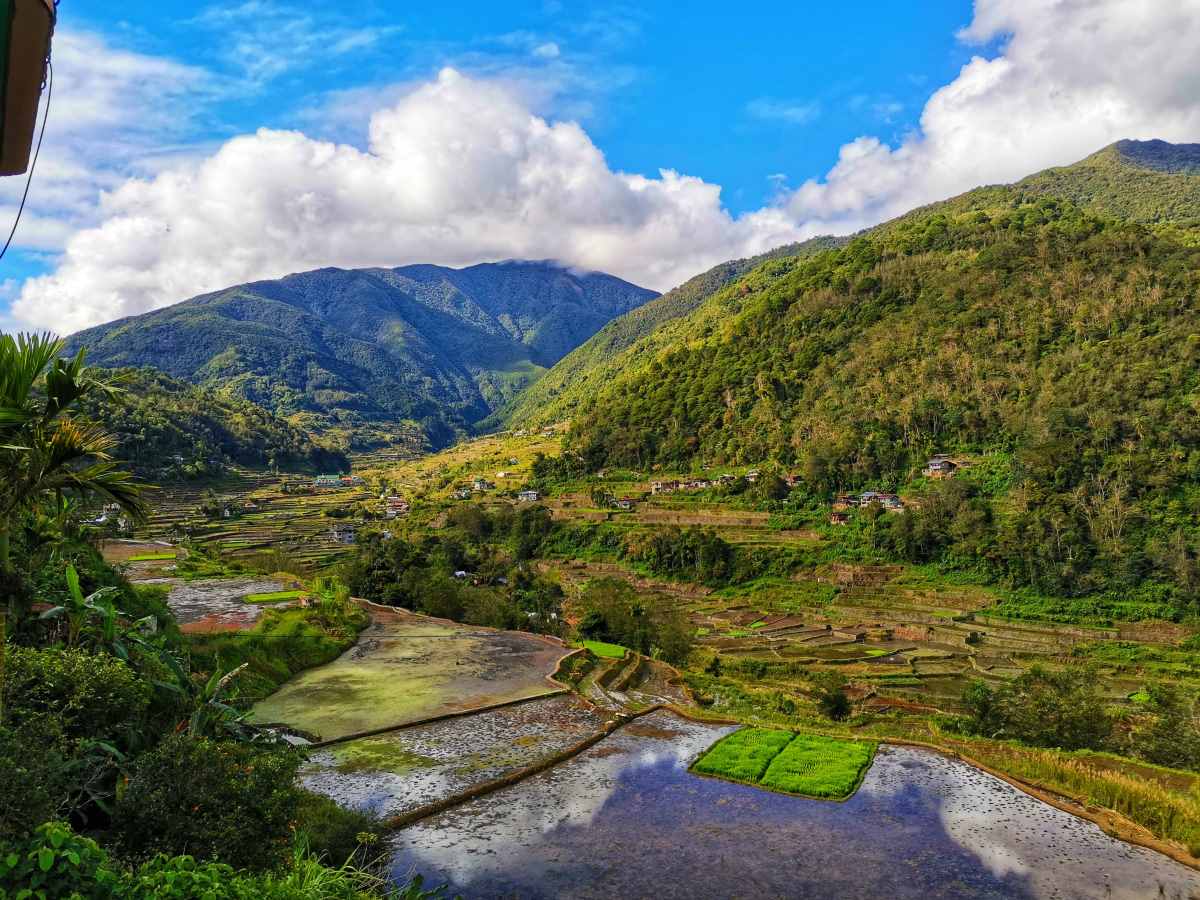Baguio living like Tagaytay living has several perks and privileges. Can you imagine how it feels like living in a place that is other people’s dream summer destination? Yes, there is more to Baguio than strawberries, swan boats, and floral floats.
Below are the reasons why you must consider living in Baguio City.
The unhurried life
For the people who call Baguio their home, life here is steady and sweet. Baguio is a place to experience life’s simple pleasures—from a cup of strawberry-flavored taho to watching the rain in the mid-afternoon.
With the steady influx of tourists, Baguio seems to be at its busiest. Once you become a resident, you will realize that these are all part of the grander things that make Baguio unique.
Did you know that the locals led the tourists to spectate the Panagbenga Festival? They usually stay at home watching the float parade on its live broadcast. Don’t get them wrong—they love to mingle with others, but they also want to allow them to savor the experience. After all, they went all the way to Baguio to see the floral parade. And when we say ‘they,’ we mean the two million spectators who came to witness the festivities.

Credit: https://www.zenrooms.com
Perhaps, it is all about the lack of city life urgency one experiences in the lowlands that separate what it feels like living in a laid-back city like Baguio. You can do golfing, cycling, Zumba dancing, or forest bathing without worrying too much about time.
The locals
The Ibagiw people not only live a laid-back lifestyle, but they also epitomized simplicity and respect. The people’s sense of humanity is something new residents must emulate. For one, they respect stoplights and pedestrians, stopping for five seconds to give way to the people crossing the street. And the taxi drivers will give your change in full.
Speaking of which, the locals do not entirely rely on a jeepney or taxi ride—they walk most of the time. It is a good thing that landmarks are close to one another. If you really need to take the cab, you can book one and pay Php90 for a twenty-minute trip.
This also explains why people are considered generally healthy. Walking is a low-key physical exercise and, thus, good for your health. A few minutes of walk from Session Road to Burnham Park alone can burn up to 45 calories, so that’s a quick workout for you even when you are too tired or lazy to hit the gym.
You will surely adopt this beneficial practice since walking even in the mid-afternoon would not feel as tiring and sticky, unlike in other places. The activity is less tolerable because of, again, the climate. Also, if you are used to riding tricycles for short-distanced errands, forget it. There are no trikes in Baguio City.
True to every Filipino, the locals are also hospitable. They are used to attending to the needs of others, including foreigners. They say that you won’t get lost in Baguio; it is either you ask for directions or walk straight ahead until you reach the city center. The locals will answer your questions with a smile too.
Everyone seems to know a member of another family living in Baguio. That’s how tight-knit the communities are.
The cool weather
In Baguio, it is cuddle weather all year long. The cool, crisp temperature makes it so cold early in the morning and at night more so come December and January wherein temperatures can go as low as 9 degrees Celsius.
Not everyone knows this, but the cold climate has several benefits. For example, it helps you sleep better at night, which enables you to think more clearly the next day. Sleeping between six and eight hours every day also helps in burning more calories.
Aside from these, the coolness of the environment lowers the risk of contracting diseases since certain bacteria and viruses do not thrive in low temperatures. And since the immune system works harder, your body can fight off infections.
The cold weather is good for the skin too. Do you ever wonder why people from Baguio have smoother and brighter skin? The climate contributes to reducing inflammation and puffiness.
Once you live here, you’ll realize that blankets and comforters (and jackets too) are more than necessary—they are life-saver. You need to have at least three layers of blankets. Or better yet, invest in a heater.
It may become difficult to navigate the city when it rains nonstop for two weeks. So you might as well invest in a sturdy umbrella because you can never leave the house without one.
The food
When it gets too cold, the locals eat and drink the coldness away. You’ll learn to do this also once you decide to live here in Baguio.
Hot mami, sweet hot choco, a cup of Benguet coffee, and sinanglaw are some of the best choices. Then there’s the street food that is aplenty, and perhaps one of your options when braving the night markets.
Then there are healthier choices—fruits and vegetables. Baguio is part of Benguet province, an agricultural area. Before the produce reaches Metro Manila, the first stop is Baguio for processing and sorting. It means getting your hand on the freshest organic veggies.
Benguet farmers are not keen on using chemical fertilizers and pesticides in growing their crops. They still utilize natural methods, keeping you from deviating from your sustainable lifestyle.

The best part is that the vegetables are cheap. You can get a bundle of fresh basil, for instance, for only Php5. If you are a vegetarian, you’ll surely appreciate the variety and prices of vegetables here.
The same goes when eating out. You’ll be served with menu items made with the freshest ingredients, including vegetarian menus, whether the cuisine is traditional or infused with modern twists. The place is definitely a haven for the foodies, or the perfect setting to unleash the foodie in you.
There is a great place to linger called Ketchup: The Food Community. Here, you will find plenty of concept restaurants. There are many other dining options such as Canto, O Mai Khan, Chef’s Home, Chaya, Hill Station, Café by the Ruins, and Baguio Craft Brewery. There would never be a shortage of satisfying food trips.
The secondhand shops
People go to Baguio to experience ukay-ukay shopping. The ukayans (thrift shops) are open every day, but the best ones operate during the night market. Here, you’ll find the cheapest branded items, including jackets and boots. Prices can go as low as Php5.
Of course, it is different when you live here—you may go to the ukays anytime you want. And the best part is you can build relationships with the owners and saleslady. You can always ask them to alert you for new arrivals.
In certain circumstances, you may ask them to set aside certain pieces that you can pay for when you return or buy in bulk for a chance to haggle to the lowest prices possible.
On a side note, the best way to bargain is through speaking with the local dialect—Ilocano. Ask, “Mano daytoy, manang?” You instantly breed familiarity and connection with the vendors. You will surely learn Ilocano when you live here.
The tourist spots
Baguio is home to various tourist attractions. Burnham Park, Camp John Hay, Mines View Park, and many more. You may go to Wright Park to enjoy horseback riding or bask in the picturesque gardens at the renowned Botanical Garden.
Besides having its own roster of tourist destinations, Baguio City is also a gateway to other equally astonishing tourist attractions in the north, such as Sagada Mountain Province, Banaue Rice Terraces, and strawberry fields.
If there’s one thing about Baguio that you will never find in other cities in the Philippines, it is the colorful glow. Even the houses at the mountainous areas, including those at the edges of the cliff, serve as a reminder of how vibrant the city is.
The city lights at night will fascinate you. And even the newest structures in the city center, they add color to the city. This is one way to up your Instagram game if you’re at it—Baguio teems with awe-inspiring views that you cannot help yourself but capture the moment.
The views
Baguio is breathtaking. Period.
Natural wonders abound, in addition to the man-made ones. They will leave you stunned for sure. Baguio is a well-developed city, and yet nature embraces it. For one, the town is surrounded by mountains that you can savor every waking moment.
Pine trees are a common sight, and the smell of it warms the soul. The abundance of such contributes to air quality. Yes, despite the traffic, which tends to get heavier when there’s an influx of tourists, air quality in Baguio is much better than other cities.

Of course, there are many benefits of living close to nature. You will surely reap these benefits if you choose to live here in the Philippines’ summer capital.
Situated in an ecoregion, Baguio City has always been a green city.
The schools
When you live in the north, Baguio is considered the academic convergence in the Cordillera region. Some of the most acclaimed universities are the University of the Philippines-Baguio, Saint Louis University, University of the Cordilleras, and the University of Baguio. Brent International School and Berkeley School also have a presence here. These institutions have proven, time and again, the high standard of education.
Improving academic excellence is part of the local government’s agenda, which takes the initiative Baguio as a University City seriously. The educational system is also well-established.
You need not worry about sending your children to school when it is time for them to attend college.
The healthcare system
At the time of the pandemic, Baguio City stood out because of its responsiveness to the healthcare crisis. The local government responded promptly, keeping the mortality rates at the lowest possible levels.
Other than that, the city has the right structure to support its healthcare goals: Baguio General Hospital (BGH). It is a complete facility, which explains why people from neighboring provinces chose to go here for quality healthcare services.
The peace and order
Horror stories aside, Baguio is made for walking. You can walk around at night, especially going to and from the night markets, the cathedral, the parks and gardens, and more.
It is generally safe to do so.
While at it, it pays to know that Baguio City was declared one of the safest cities in Southeast Asia in 2018. The already-low crime rates had a 41.8% decrease in 2018 compared with that of 2017. Not just in Baguio, but the entire Cordillera region. In 2019, the crime volume was down by 18%.
These are reasonable indications of the commitment of the local government to protect its people. Besides, the government is less corrupt here, so there’s a good balance of power between the authorities and the people. Peace and order should be a critical consideration when looking for a place to live in.
The cost of living
This information is critical for those who are seriously considering living in Baguio City soon and for the long-term.
With all the things mentioned above—cheap food, inexpensive items, the walkability of the city, quality essential services, and more, one can say that Baguio has a relatively low cost of living. This is despite the extent of commercialization in the area.
Speaking of which, the present establishments are more than enough to provide you with the modern conveniences when the need for them kicks in. Therefore, living in Baguio means no compromises because everything you will ever need is there and at a fraction of the price.
For instance, a thousand peso is more than enough to cover the utility bills (water and electricity). You need not turn on the air-conditioning system or electric fan because it is already cold.
The lingering nostalgia
Baguio is like an open canvas; it continues to thrive, especially artistically against the backdrop of old school charm. It is this creative energy that you will surely imbibe, whether cultivating your own artistry or appreciating that of the other artists around you.
Despite how modern Baguio can get, the Ibagiw people—the locals—respect culture and traditions. If you want to know more about the city and its people, museums and galleries are your best bet. Good thing, there are many of them in the city. If not the museums, you can go to Tam-Awan Village to have a glimpse of the people of the Cordillera’s way of life. The village features Kalinga huts and Ifugao houses.
Wood carving, fabric weaving, and other handicrafts are some of the sources of livelihood. There is a place called Woodcarver’s Village, where you can see the locals creating wooden sculptures from scratch. These are why the United Nations Educational, Scientific, and Cultural Organization (UNESCO) dubbed Baguio as a Creative City.
Baguio is also a sweet escape for local artists. BenCab (Ben Cabrera) is the perfect example of an artist who chose to stay in the City of Pines and call it home. BenCab Museum, which also boasts of a café, farm, mini forest, is one of the frequently visited places in the city.
And so is Benhur Villanueva, a renowned sculptor and art master.
Session Road and the lines of bars and restaurants in the area hone creativity, while also telling you that the night is always young. Such a creative mindset does not stay in Baguio. In some instances, they become mainstream. Joey “Pepe” Smith, one of the Philippines’ rock legends, is from Baguio.
The artists are also highly adaptive. For example, you can enjoy spoken word poetry in the breezy afternoon at Mt. Cloud Bookshop.
So if you love art, music, or literature, you’ll find a home in Baguio figuratively speaking. Creativity overflows in this part of the country. The serenity and the vibrance of the place stimulate deep thinking and inspiration.
You can experience all these for good. Sometimes, you just want to forget the chaotic urban jungle and settle somewhere intimate and serene, and yet with all the conveniences that the city offers. Baguio living is the ideal solution to your woe.
The city thrives with diversity, from the jumble of people, including those from the lowlands and the metro, to the art scene and cuisine. Experiencing all these things every day is a privilege that only Baguio City can offer.
Housing opportunities are a great many. Whether you are looking for a house near or away from the city center, big or small, there should be one to accommodate your needs, preferences, and non-negotiables. The best part is all these housing options spell c-o-z-y. Whichever you choose is definitely a good investment.
Baguio is perfect whether you are a single millennial looking to relocate, a young family finding a place to settle in, or a retired couple who just want to enjoy the rest of their lives. Baguio City is for everyone!


